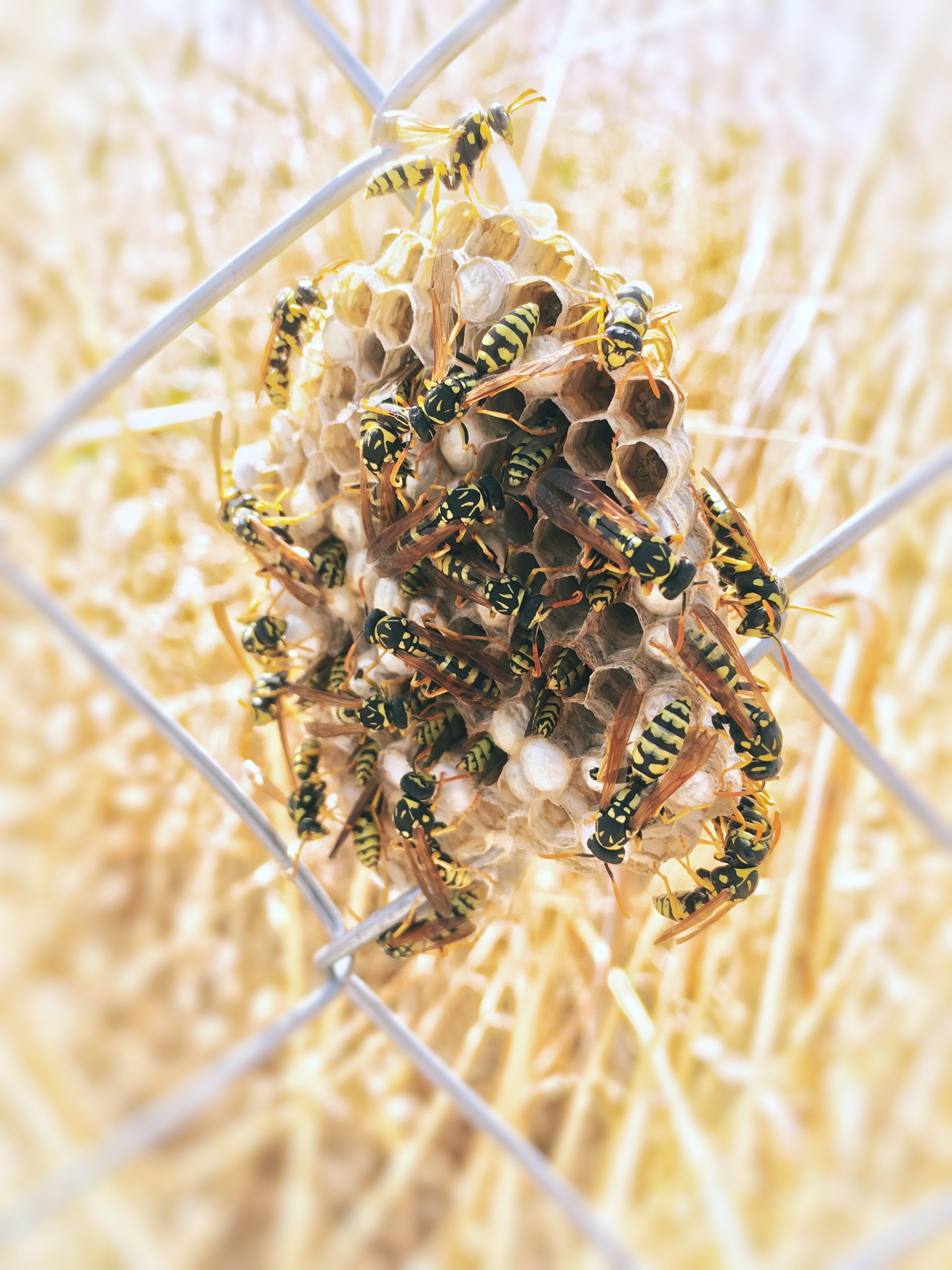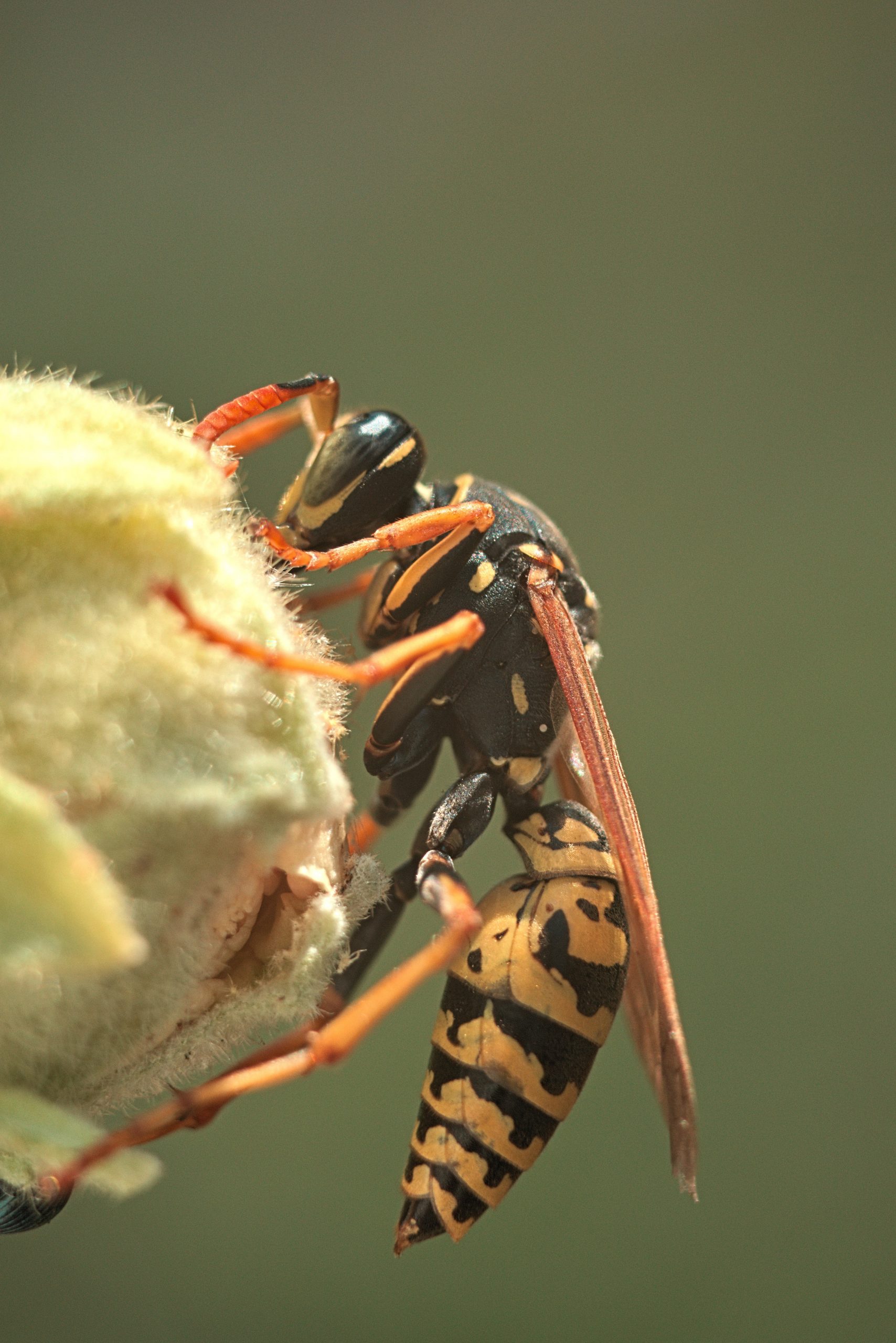Wasps
Wasps are distinguishable from bees by their pointed lower abdomens and the narrow “waist,” called a petiole, that separates the abdomen from the thorax.
They come in every color imaginable, from the familiar yellow to brown, metallic blue, and bright red. Generally, the brighter colored species are in the Vespidae, or stinging wasp, family.
All wasps build nests. Whereas bees secrete a waxy substance to construct their nests, wasps create their familiar papery abodes from wood fibers scraped with their hard mandibles and chewed into a pulp.
Wasps are divided into two primary subgroups: social and solitary. Social wasps account for only about a thousand species and include formidable colony-builders, like yellow jackets and hornets.
Social wasp colonies are started from scratch each spring by a queen who was fertilized the previous year and survived the winter by hibernating in a warm place. When she emerges, she builds a small nest and rears a starter brood of worker females. These workers then take over expanding the nest, building multiple six-sided cells into which the queen continually lays eggs. By late summer, a colony can have more than 5,000 individuals, all of whom, including the founding queen, die off at winter. Only newly fertilized queens survive the cold to restart the process in spring.

